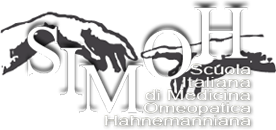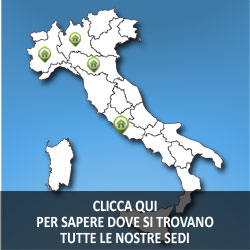Il 22 marzo di ogni anno si festeggia l’acqua, l’elemento sinonimo di vita.
Dall’Acqua ha avuto origine la vita sul nostro pianeta e senza di essa cesserebbe di esistere.
La Giornata Mondiale dell’Acqua, World Water Day, è una ricorrenza istituita dalle Nazioni Unite nel 1992, prevista all’interno delle direttive dell’agenda 21, risultato della conferenza di Rio.
Il 22 marzo di ogni anno gli Stati che siedono all’interno dell’Assemblea Generale delle Nazioni Unite sono invitati alla promozione dell’acqua promuovendo attività concrete nei loro rispettivi Paesi.
L’acqua è l’elemento sinonimo di vita. Da essa ha avuto origine la vita sul nostro pianeta e senza di essa cesserebbe di esistere.
Il nostro corpo, come numero di molecole, è costituito da circa il 99% da molecole d’acqua; soltanto il restante 1% è costituto da molecole diverse dall’acqua (proteine, DNA, ormoni, vitamine, ecc.).
Studiare l’acqua” significa immergersi in un mondo sconosciuto. Si tratta infatti di un tema particolarmente ampio e complesso: senza dubbio è il liquido più esaminato al mondo, che tuttavia presenta ancora tante, tantissime, incognite. Più gli esperti studiano le proprietà dell’acqua, più si rendono conto di quanto ancora ci sia da scoprire.
ALCUNE RICERCHE SCIENTIFICHE SULL’ARGOMENTO “ACQUA” DI INTERESSE PER L’OMEOPATIA
- V. Elia, F. Rosati, G. Barone, A. Monroy, and A.M. Liquori – “A thermodynamic study of sperm-egg interaction” – The EMBO Journal, 2, 2053-2058 (1983);
- G. Castronuovo, V. Elia and F. Velleca – “Hydrophilic interactions determine cooperativity of hydrophobic interactions and molecular recognition in aqueous solutions of non electrolytes. The preferential configuration model.” – Current Topics in Solution Chemistry, 2, 125-142 (1997);
- S. Andini, G. Castronuovo, V. Elia and F. Velleca – “Dependence of chiral recognition of a-aminoacids and their derivatives on the nature of functional groups. Calorimetric and spectroscopic studies.” – J. Chem. Soc. Faraday Trans., 94, 1271-1275 (1998);
- G. Castronuovo, V. Elia, M. Niccoli, and F. Velleca – “Simultaneous determination of solubility, dissolution and dilution enthalpies of a substance from a single calorimetric experiment.” – Thermochim. Acta. 320, 13-22 (1998);
- G. Castronuovo, V. Elia, A. Iannone, M. Niccoli, and F. Velleca – “Factors determining the formation of the complexes between a-cyclodextrin and alkylated substances in aqueous solutions. A calorimetric study at 25°C.” – Carbohydr. Res., 325, 278-286 (2000);
- V. Elia and M. Niccoli – “Thermodynamics of Extremely Diluted Aqueous Solutions” – Annals of the New York Academy of Sciences, 879, 241 (1999);
- V. Elia and M. Niccoli – “New physico-chemical properties of water induced by mechanical treatments. A Calorimetric study at 25°C.” – Journal of Thermal Analysis and Calorimetry, 61, 527-537 (2000);
- V. Elia and M. Niccoli – “New Physico-Chemical Properties of Extremely Diluted Aqueous Solutions” – Journal of Thermal Analysis and Calorimetry,75, 815-836 (2004);
- V. Elia, S .Baiano, I. Duro, E. Napoli, M. Niccoli, L. Nonatelli – “New and Permanent Physico-Chemical Properties of The Extremely Diluted Aqueous Solutions of the Homeopathic Medicine. A Conductivity Measurements Study at 25°C in Function of the Age of the Potencies” – Homeopathy, 93, 144-150 (2004);
- V. Elia, E. Napoli, M. Niccoli, L. Nonatelli, A. Ramaglia, E. Ventimiglia – “New Physico-Chemical Properties of Extremely Diluted Aqueous Solutions. A calorimetric and conductivity study at 25°C.” – Journal of Thermal Analysis and Calorimetry, 78, 331-342 (2004);
- V. Elia, M. Marchese, M. Montanino, E. Napoli, M. Niccoli, L. Nonatelli, A. Ramaglia – “Hydrohysteretic phenomena of “extremely diluted solutions” induced by mechanical treatments. A calorimetric and conductometric study at 25 °C.” – Journal of Solution Chemistry, 34(8), 947-960 (2005);
- V. Elia, L. Elia, P. Cacace, E. Napoli, M. Niccoli, F. Savarese – “Exstremely dilute solutions as multi-variable systems. A study of calorimetric and conductometric behaviour as function of the parameter time” – J. Therm. Anal. Calor., 84(2), 317-323 (2006);
- V. Elia, L. Elia, M. Marchese, M. Montanino, E. Napoli, M. Niccoli, L. Nonatelli, F. Bavarese – “Interaction of “extremely diluted solutions” with aqueous solutions of hydrochloric acid and sodium hydroxide. A calorimetric study.” – J. Mol. Liq., (2006) in corso di pubblicazione;
- V. Elia, L. Elia, M. Montanino, E. Napoli, M. Niccoli, L. Nonatelli – “Conductometric studies of the Serially Diluted and Agitated Solutions.On an anomalous effect that depends on the dilution process.” – J. Mol. Liq., (2006) accettato per la pubblicazione;
- V. Elia, L. Elia, E. Napoli, M. Niccoli – “Conductometric and calorimetric studies of serially diluted and agitated solutions: the dependance of intensive parameters on volume” – International Journal of Ecodynamics, Vol.1 No.4 (2006);
- E. Collini, C. Y. Wong, K. E. Wilk, P. M. G. Curmi, P. Brumer, G. D. Scholes, “Coherently wired light-harvesting in photosynthetic marine algae at ambient temperature”, Nature 463, 644-647 (2010);
- N. Marchettini, E. Del Giudice, V. L. Voeikov, E. Tiezzi “Water: A medium where dissipative structures are produced by a coherent dynamics”, J. Theo. Bio. 265, 511-516 (2010).
- A. Kurcz, A. Capolupo, A. Beige, E. Del Giudice, G. Vitiello, “Energy concentration in composite quantum systems”, Phys. Rev. A 81, 063821 (2010).
- E. Del Giudice, G. Vitiello, “Role of the electromagnetic field in the formation of domains in the process of symmetry-breaking phase transitions”, Phys. Rev. A 74, 22105 (2006).
- E. Del Giudice, R. M. Pulselli, E. Tiezzi, “Thermodynamics of irreversibile processes and Quantum Field Theory: An interplay for the understanding of ecosystem dynamics”, Ecol. Model. 220, 1874-1879 (2009).
- A. Tedeschi, “Is the living dynamics able to change the properties of water?”, International Journal of Design & Nature and Ecodynamics, 5(1), 60–67 (2010).
- R. Germano et al., “Oxhydroelectric Effect: Electricity from Water by Twin Electrodes”, Key Engineering Materials, 495, 100-103 (2012).
- R. Germano et al., “Oxhydroelectric Effect: oxygen mediated electron current extraction from water by twin electrodes”, Journal of Optoelectronics and Advanced Materials (in corso di pubblicazione).
- L. Montagnier, J. Aissa, S. Ferris, J. Montagnier, C. Lavallée, “Electromagnetic Signals Are Produced by Aqueous Nanostructures Derived from Bacterial DNA Sequences”, Interdiscip. Sci. Comput. Life Sci., 1:81-90 (2009).
- L. Montagnier , J. Aissa, E. Del Giudice, C. Lavallée, A. Tedeschi and G. Vitiello, “DNA , Waves and water”, “Journal of Physics: Conferences Series”, The proceedings of DICE 2010: Space, Time, Matter – Current Issues in Quantum Mechanics and Beyond, 2011.
Comunicazione a cura di:
Centro Ricerche Biomediche SIMOH
Scuola Italiana di Medicina OmeopaticaHahnemanniana
Via Giovanni Miani, 8 – 00154 Roma
www.omeopatiasimoh.net – info@omeopatiasimoh.net

